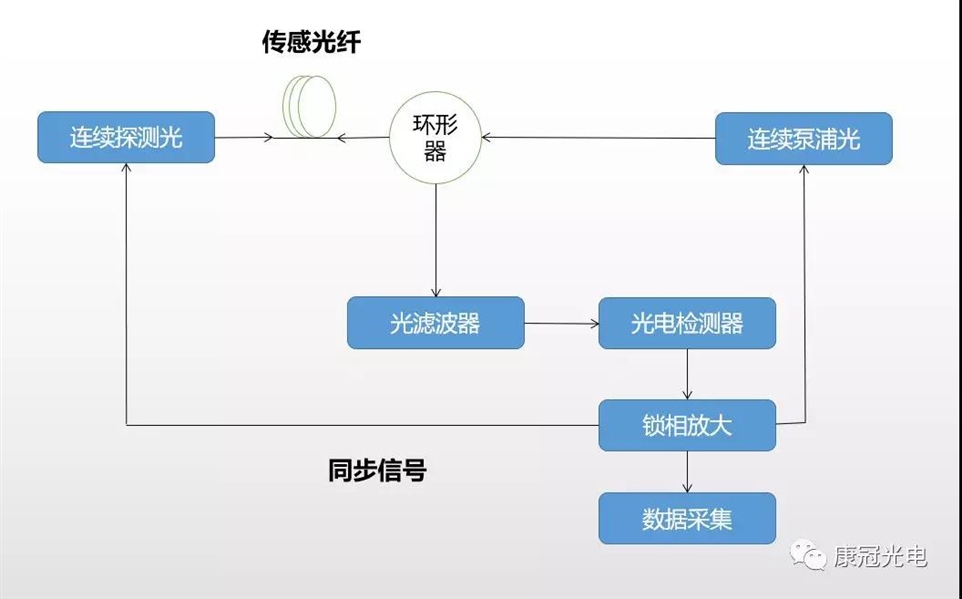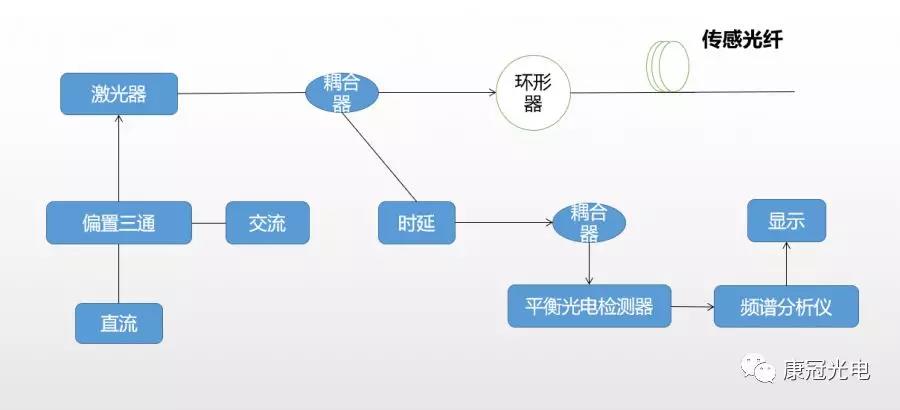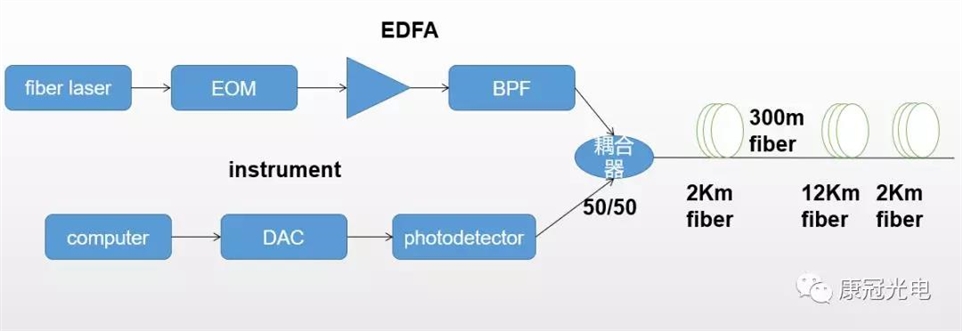(technology sharing) optical fiber solutions (2)
Bocda stimulated Brillouin scattering solution
Bocda technology uses frequency modulated continuous pump light and probe light to calculate their correlation functions. It is a technical scheme that can significantly improve the distributed optical fiber sensor system's spatial resolution. The spatial resolution of the experimental procedure can reach millimeter level in theory

Both ends of the sensing optical fiber are respectively incident with continuous probe light and steady pump light. These two synchronously modulated lights produce a related periodic peak on a sine wave and receive the lock-in amplifier's synchronous signal on the photodetector. After stimulated Brillouin scattering of probe light and pump light, they pass through a circulator, optical filter, and photoelectric detector in turn. Brillouin distribution on the optical fiber is determined by the correlation degree of detection period peak of a lock-in amplifier to realize distributed measurement.
|
Related products |
Model and description |
|
Narrow linewidth laser |
Kangguan kg-nls series laser, Rio fiber laser, NKT fiber laser |
|
Electro optic intensity modulator |
Kangguan kg-am series modulator, up to 20GHz bandwidth, high extinction ratio to 40dB |
|
Lock in amplifier |
Signal Recovery 7270; Scientific Instruments SR810$sr830 |
|
Optical filter |
EXFO XTM-50 |
|
High sensitivity detector |
Kangguan kg-apr, kg-pr series, low noise and high gain |
|
Balanced light detector |
Kangguan kg-bpr series, high CMRR, low noise |
|
High speed photodetector |
KG-PD-20/40系列 |
Bocdr stimulated Brillouin scattering solution
As a single terminal system, BOTDR is more advantageous than a double terminal design. Still, it can not meet the requirements of high precision and high spatial resolution measurement at the same time.

The coupler divides the light source into two ways; one is the reference light used as the local vibration light. After the delay, the autocorrelation is added on the balanced photoelectric detector; the other is the pump light, sent to the sensing optical fiber through the circulator, and the Stokes light scattered by the sensing optical fiber is sent to the balanced photoelectric detector. The two signals are sent to the spectrum analyzer after the flat photoelectric sensor.
|
related product |
Model and description |
|
Narrow linewidth laser |
Kangguan kg-nls series laser, Rio fiber laser, NKT fiber laser |
|
Electro optic intensity modulator |
Kangguan kg-am series modulator, up to 20GHz bandwidth, high extinction ratio to 40dB |
|
Pumping light source |
Kangguan 980 pumped laser |
|
Optical delay line |
Kg-mdl series, 300ps, 600ps, 1100ps high-precision optical delay line |
|
Balanced light detector |
Kangguan kg-bpr series, high CMRR, low noise |
|
Spectrum analyzer |
Tektronix、Rohde&Schwarz |
Φ - OTDR - Rayleigh scattering solution
In the OTDR system, if the light source's linewidth is narrow enough and the coherence is high enough, the scattered light returned from different parts of the fiber will interfere. The phase-sensitive OTDR system designed using the scattered light's coherence can detect the interference of the weak signal, which the traditional OTDR system can not see.

|
related product |
Model and description |
|
Narrow linewidth laser |
Kangguan kg-nls series laser, Rio fiber laser, NKT fiber laser |
|
Electro optic intensity modulator |
Kangguan kg-am series modulator, up to 20GHz bandwidth, high extinction ratio to 40dB |




















